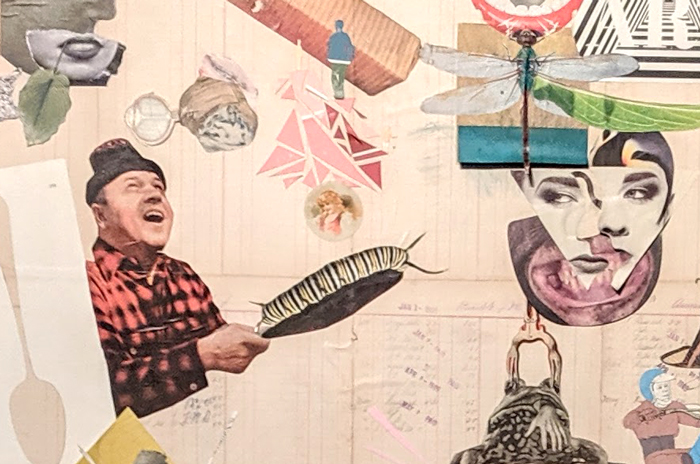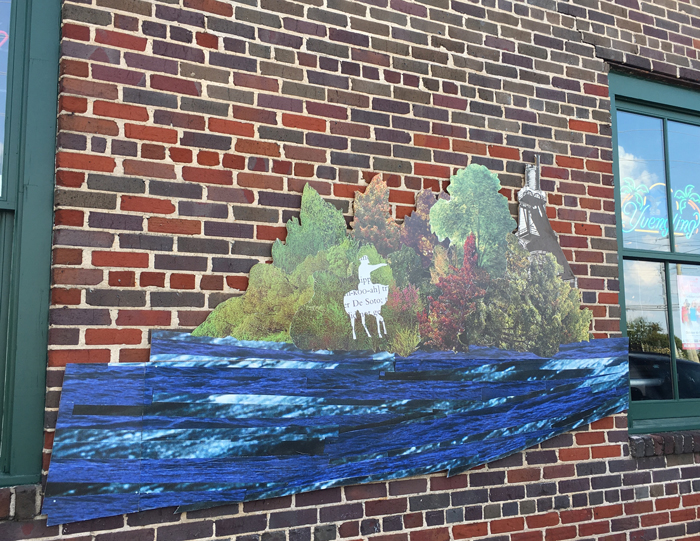
48”x60”; collage on medium-density fibreboard; 2019. Courtesy of the Mystic Krewe of Scissors & Glue.
FROM KOLAJ 29
Teresa Cribelli & the Mystic Krewe of Scissors & Glue
In its most basic state, fragments of printed matter glued to a substrate, collage is small. The immediacy and intimacy of the medium is one of its points of attraction, but these are qualities which, theoretically speaking, puts it at odds with the broader ecosystem of contemporary art which privileges big gestures and spectacle. From installation work to mural making to simply creating large tableaux, contemporary artists need to be able to manifest in multiple ways in order to be successful in the current art world milieu. Muralism in Kolaj #29 is the second part in a year long series of articles that investigates the strategies and approaches artists use to go big, increase the scale of their work, and engage with the larger art world.
This article appears in Kolaj 29. To see the entire article, SUBSCRIBE to Kolaj Magazine or Get a Copy of the Issue.
In Kolaj #29, we report on two examples of mural making:

Courtesy of Teresa Cribelli
Black Warrior River Mural
On a Chamber of Commerce-sponsored trip to other cities, Tuscaloosa, Alabama businessman Tripp Powell was impressed with how they used public art to stimulate the economy. Meanwhile, Teresa Cribelli engaged the students in her Environmental History of the Americas class to draft proposals for an environmental project. These two timelines came together in the Black Warrior River Mural, placed between two windows of a brick building in downtown Tuscaloosa

48”x60”; collage on medium-density fibreboard; 2019. Courtesy of the Mystic Krewe of Scissors & Glue.
CollabSlab at Kolaj Fest New Orleans 2019
At Kolaj Fest New Orleans 2019, the New Orleans collage collective, the Mystic Krewe of Scissors and Glue, organized a giant CollabSlab. The idea was to invite Kolaj Fest attendees to contribute to a community-wide collaboration and to see if a group of people could work together to make a large work. The collage was guided by Michael Pajón, Christopher Kurts, and members of the Krewe. The CollabSlab reads as a cacophony of cultural references, a waltz, if you will, through 20th century printed imagery. The piece works as a gestalt with a sundry palette and airy composition that uses the large space and could seemingly go on and on if the panel was larger.
This article appears in Kolaj 29. To see the entire article, SUBSCRIBE to Kolaj Magazine or Get a Copy of the Issue.
